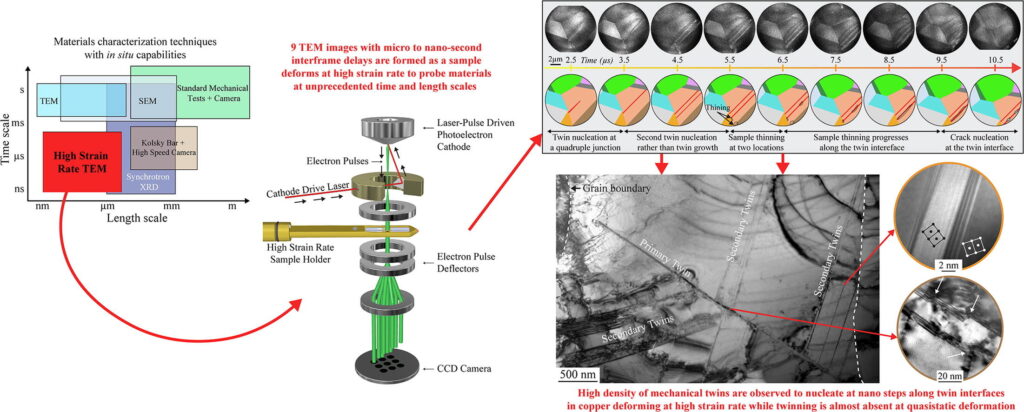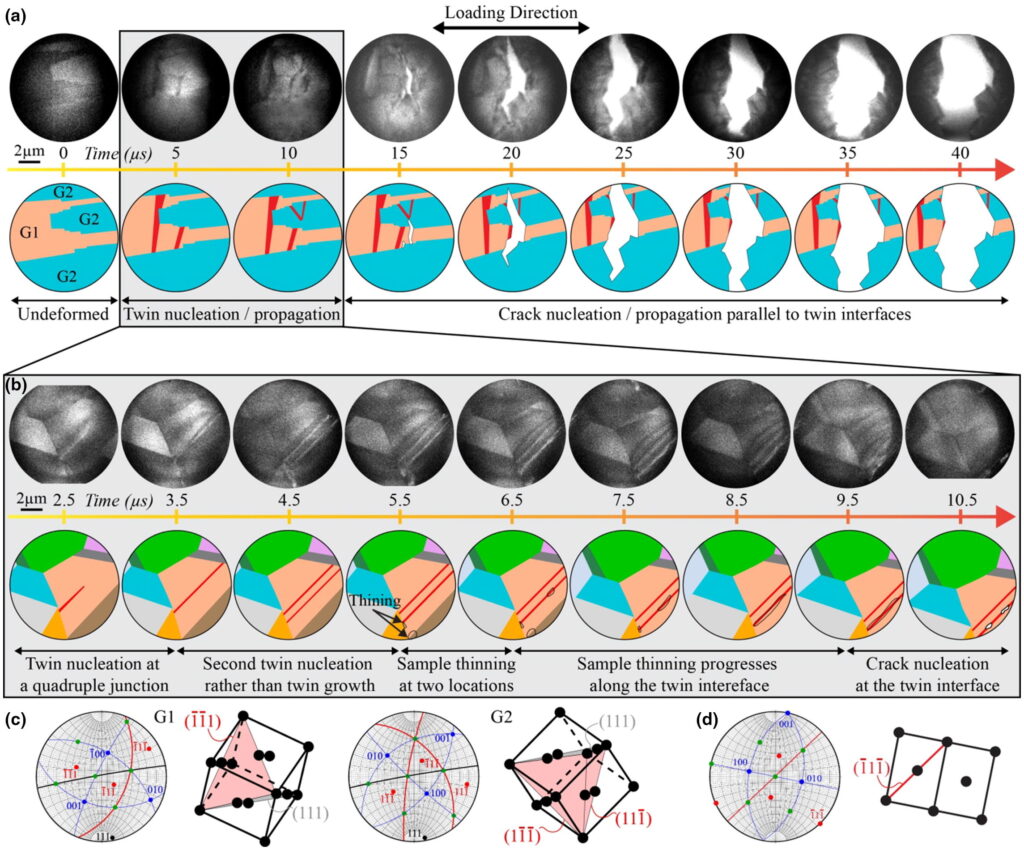One component of the recent ARL funding research consortium, “Materials in Extreme Dynamic Environments” is very high strain rate mechanical testing of metals with concurrent electron microscopy. Electron microscopy provides unequaled resolution of the details required to understand in detail the specific mechanism(s) by which materials plastically deform. In situ mechanical testing in a transmission electron microscope (TEM) is an established technique for identifying deformation mechanisms, but previous in situ efforts have focused on static samples or low strain rates in the 0.01 – 0.1 s-1 range. Ex situ high-strain rate testing is common, but these studies have been limited to bulk samples and bulk characterization of strain and deformation using strain gauges and high speed cameras. This project combined high-strain rate testing with in situ electron microscopy in a dynamic TEM. Working with collaborators at LLNL we , we presented experimental observations of the nucleation, motion, and interaction of defects and cracks during deformation of pure copper at strain rates between 103 and 104 s-1 [1]. To do so we coupled a custom-built in situ high-rate straining stage with nanosecond-resolution dynamic transmission electron microscopy. The resulting images show that while twins play only a minor role in the deformation of copper at quasi-static strain rates, the twin nucleation rate increases markedly at high strain rates. The preferred nucleation sites for twins also change, and the new twin interfaces become preferential paths for crack propagation, facilitating fracture through the original grains.


Demonstration of DTEM Straining Holder Operation
